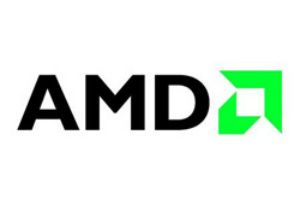Advanced Micro Devices (AMD) showed off a Windows 8 tablet running the company’s upcoming tablet chip code-named Temash, which the company hopes will reverse a string of past failures and provide enough ammunition to compete with tablet chip leaders ARM and Intel.
The prototype tablet made by Wistron has a 10.6" screen and plays full 1080p high definition video. AMD has mostly been repurposing netbook chips for tablets, and the tablet demonstration was intended to showcase the progress made by AMD in making chips exclusively for tablets.
The Temash chip will be targeted at tablets that can run full HD games and productivity applications, and also have features that will enable long battery life, said Lisa Su, senior vice president at AMD, during a company press conference on Monday at the International CES trade show held in Las Vegas.
Many tablets are mostly content consumption devices that don’t provide the capability to run full applications, Su said. Temash will be able to run a full operating system like Windows 8, while drawing less than 5W of power and providing long battery life to tablets.
The Temash chip will come in dual-core and quad-core variants. The chip will be 100% faster than the existing Z60 tablet chip, which was introduced in October and is currently found in only a handful of devices such as tablets from Fujitsu and Vizio.
The first tablets based on the Temash chips could reach shelves later this year, Su said. However, she could not provide a price for Temash-based tablets.
The Temash chip will be critical for AMD. The company has already failed with its first two tablet chips including last year’s Hondo and its Z-01 tablet chip, which was announced in 2011 but failed as it appeared in only a handful of unsuccessful devices.
The fast-growing tablet market is one of AMD’s top priorities as it tries to step away from its heavy reliance on the slumping PC market. The lack of a coherent tablet strategy forced former CEO Dirk Meyer to leave the company in 2011. Former Lenovo exec Rory Read was appointed AMD’s CEO in August 2011, and the company has now retooled its chip road map as it tries to jump out of its financial struggles.
Tablets have mostly evolved around ARM processors, which are used in notable products such as Apple’s iPad, Amazon’s Kindle Fire HD and Microsoft’s Surface. By comparison, adoption of the more power-hungry x86 tablet chips from Intel and AMD has been much slower.
But AMD is behind Intel even in the x86 tablet chip market. Device makers like Lenovo, Dell, Hewlett-Packard, Samsung, Acer and Asus have announced Windows 8 tablets with Intel’s tablet-specific Atom Z2760 chip code-named Clover Trail. Some Windows 8 tablets also use the Core processors based on the Ivy Bridge microarchitecture, and Intel is introducing low-power Ivy Bridge chips for tablets.
The Temash tablet chip is based on the faster and more power-efficient Jaguar CPU core. The chip will have an advantage over its Intel and ARM counterparts with 64-bit addressing capabilities, with which device makers will be able to add more memory and storage in tablets. The capability will also give Temash-based tablets the ability to run older 64-bit applications written for older Windows operating systems.
AMD also said that low-power laptops based on the upcoming dual- and quad-core chips code-named Kabini will be available in the first half of this year. The chips will deliver 50% more overall performance than existing Brazos chips that go into netbook laptops. The laptops will deliver more than 10 hours of battery life, which is a slight improvement from existing Brazos laptops.
The company also said it would deliver new laptops with the A8 and A10 quad-core chips that will deliver up to 40% more performance than previous generations of chips.
IDG News Service





Subscribers 0
Fans 0
Followers 0
Followers